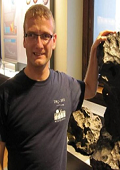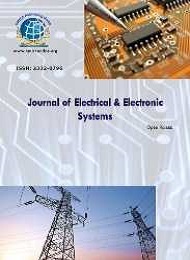Theme: Thriving to Change the Research Cycle in Optics, Laser & Photonics
Optics-laser 2020
Conference Series heartily welcomes you to attend the "16th International Conference on Optics, Lasers & Photonics” during August 20-21, 2020 at Prague, Czech Republic.
The main theme of the conference is “Thriving to Change the Research Cycle in Optics, Laser & Photonics".
We cordially invite all the participants who are interested in sharing their knowledge and research in the area of Physics, Optics, Laser and Optical Engineering. Optics and Laser Technologies anticipates more than 300 participants around the globe with thought provoking Keynote lectures, Oral and Poster presentations.
Opportunity to attend the presentations delivered by eminent scientists, researchers, experts from all over the world. Participation in sessions on specific topics on which the conference is expected to achieve progress. Global networking in transferring and exchanging Ideas. Share your excitement in promoting new ideas, developments and innovations in Optics Laser 2020.
Why to Attend?
In the of this theme, the conference series aims to disseminate the advancements of research in optics and laser technologies to the global community by creating a platform for active participation, exchange of expertise and lateral thinking from researchers, scientists, and educators through invited plenary lectures, symposia, workshops, invited sessions and oral and poster sessions of unsolicited contributions. Conference Series look forward to welcoming you to an inspiring, educational and enjoyable program in Tokyo, Japan with the intent of emphasizing the applications of optics and laser technologies research to the improvement of the global strength.
Target Audience:
- Physicist
- Radiologist
- Dentist
- Ophthalmologist
- Oncologist
- Cosmetic Surgeons
- Professors
- Academic Scientist
- Students
- Researchers
- Astronomist
- Laser Technician
- Directors, Managers and CEO
Conference Series heartily welcomes you to attend the "16th International Conference on Optics, Lasers & Photonics” during August 20-21, 2020 at Prague, Czech Republic.
The main theme of the conference is “Thriving to Change the Research Cycle in Optics, Laser & Photonics".
We cordially invite all the participants who are interested in sharing their knowledge and research in the area of Physics, Optics, Laser and Optical Engineering. Optics and Laser Technologies anticipates more than 300 participants around the globe with thought provoking Keynote lectures, Oral and Poster presentations.
Opportunity to attend the presentations delivered by eminent scientists, researchers, experts from all over the world. Participation in sessions on specific topics on which the conference is expected to achieve progress. Global networking in transferring and exchanging Ideas. Share your excitement in promoting new ideas, developments and innovations in Optics Laser 2020.
Why to Attend?
In the of this theme, the conference series aims to disseminate the advancements of research in optics and laser technologies to the global community by creating a platform for active participation, exchange of expertise and lateral thinking from researchers, scientists, and educators through invited plenary lectures, symposia, workshops, invited sessions and oral and poster sessions of unsolicited contributions. Conference Series look forward to welcoming you to an inspiring, educational and enjoyable program in Tokyo, Japan with the intent of emphasizing the applications of optics and laser technologies research to the improvement of the global strength.
Target Audience:
- Physicist
- Radiologist
- Dentist
- Ophthalmologist
- Oncologist
- Cosmetic Surgeons
- Professors
- Academic Scientist
- Students
- Researchers
- Astronomist
- Laser Technician
- Directors, Managers and CEO
Track 1: Laser Systems
LASER stands for light amplification by stimulated discharge of radiation. We all know that light is an electromagnetic wave. Each wave has its own brightness and colour, and shudders at a certain angle, called polarization. This concept also applies to laser light but it is more parallel than any other light source. Every part of the beam has almost exact similar route and so the beam will diverge very little. With a good laser an object at a distance of 1 km can be illuminated through a dot about 60 mm in radius. As it is so parallel, it can be focused to very small diameters where awareness of light vitality becomes so high that you can drill, cut, or turn with the ray. It is also possible to illuminate and observe very minute details with the lasers, thus it is used in surgical claims and CD players as also. It can also be completed very monochromic, thus only one light wavelength is existing. This is not the example with the ordinary light sources. White light encloses all colours in the spectrum, but even a coloured light, such as a red LED contains a frequented interval of red wavelengths.
Related Societies: American Physical Society | Fellows of the Australian Institute of Physics | Institute of Physics | Optical Society | Académie de Physique | American Crystallographic Association | American Physical Society | Australian Institute of Physics | Austrian Physical Society | Brazilian Physical Society | Canadian Association of Physicists | Chinese Physical Society | Community of Physics | Deutsche Physikalische Gesellschaft | Estonian Physical Society | European Physical Society | Faraday Society | Indian Physical Society | Institute of Physics | Italian Physical Society | International Association of Mathematical Physics
Track 2: Optics and Lasers in Medicine
There are some surgical operations that are perplexing to perform with the conventional scalpel. Initial trials with laser beam displayed that a finely focused beam from a carbon dioxide gas laser could cut through human tissue smoothly and neatly. The surgeon could direct the beam from any angle by using a mirror attached on a portable metal arm. Therefore, now a day’s laser beam is the most desired tool which is used as a standby for the conventional blade to perform problematic surgeries. Lasers were considered as most effective in operating on parts that are easy to reach-areas on the body's exterior, including the ears, skin, mouth, eyes and nose. But in recent years doctors have established the remarkable improvement in emerging laser techniques for use in internal exploration and surgery. For illustration lasers are gradually used to clean plaque from people's arteries.
Related Societies: Society of Physicists of Macedonia | Society of Physics Students | Mathematical Association of AmericAmerican Physical Society | Fellows of the Australian Institute of Physics | Institute of Physics | Optical Society | Académie de Physique | American Crystallographic Association | American Physical Society | Australian Institute of Physics | Austrian Physical Society | Brazilian Physical Society | Canadian Association of Physicists | Chinese Physical Society | Community of Physics | Deutsche Physikalische Gesellschaft | Estonian Physical Society | European Physical Society | Faraday Society
Track 3: Optoelectronics
Optoelectronics is the field of technology that associates the physics of light with power. It incorporates the design, study and manufacture of hardware devices that convert electrical signals into photon signals and photons signals to electrical signals. Any device that operates as an electrical-to-optical or optical-to-electrical is considered an optoelectronic device. Optoelectronics is built up on the quantum mechanical special effects of light on electronic materials, sometimes in the presence of electric fields, especially semiconductors. Optoelectronic technologies comprise of laser systems, remote sensing systems, fibre optic communications, optical info systems, and electric eyes medical diagnostic systems.
Related Societies: Society of Physics Students | Mathematical Association of AmericAmerican Physical Society | Fellows of the Australian Institute of Physics | Institute of Physics | Optical Society | Académie de Physique | American Crystallographic Association | American Physical Society | Australian Institute of Physics | Austrian Physical Society | Brazilian Physical Society | Canadian Association of Physicists | Chinese Physical Society | Community of Physics | Deutsche Physikalische Gesellschaft | Estonian Physical Society | European Physical Society | Faraday Society | Indian Physical Society | Institute of Physics
Track 4: Optical Communications and Networking
Optical communications networks are enhancing a vital role such as there is high demand for capacity links. DWDM which means dense wavelength division multiplexing is widely organized at the core networks to deliver high capacity transport systems. Optical components such as, tunable filters, termination devices, optical amplifiers transceivers, and add-drop multiplexers are becoming more trustworthy and affordable. Access network and metropolitan area networks are progressively built with optical technologies to overcome the electronic blockage at network edges. Subsystems and new components for very high speed optical networks offer a new design options. Free-space optical communication has been arranged in space, while terrestrial forms are naturally limited by weather, geography and the availability of light.
Related Societies: Fellows of the Australian Institute of Physics | Institute of Physics | Optical Society | Académie de Physique | American Crystallographic Association | American Physical Society | Australian Institute of Physics | Austrian Physical Society | Brazilian Physical Society | Canadian Association of Physicists | Chinese Physical Society | Community of Physics | Deutsche Physikalische Gesellschaft | Estonian Physical Society | European Physical Society | Faraday Society | Indian Physical Society | Institute of Physics | Italian Physical Society | International Association of Mathematical Physics The Optical Society | Photonics Society of Poland | Physical Society of London | Swiss Physical Society | Physics Society of Iran | Société Française de Physique | Society of Physicists of Macedonia
Track 5: Nanophotonics and Biophotonics
Nano photonics is the study of the behavior of light on the nano meter scale, and of the interaction of nano meter-scale objects with light. It is a branch of optics, electrical engineering, and nanotechnology. It often involves metallic components, which can transport and focus light by means of surface plasmon polaritons. Bio photonics can also be described as the advance and application of optical techniques particularly imaging, to study of biological molecules, tissue and cells. One of the main benefits of using optical techniques which make up bio photonics is that they reserve the reliability of the biological cells being examined, i.e. scattering material, on a microscopic or macroscopic scale
Related Societies: American Crystallographic Association | American Physical Society | Australian Institute of Physics | Austrian Physical Society | Brazilian Physical Society | Canadian Association of Physicists | Chinese Physical Society | Community of Physics | Deutsche Physikalische Gesellschaft | Estonian Physical Society | European Physical Society | Faraday Society | Indian Physical Society | Institute of Physics | Italian Physical Society | International Association of Mathematical Physics | The Optical Society | Photonics Society of Poland | Physical Society of London | Swiss Physical Society | Physics Society of Iran | Société Française de Physique | Society of Physicists of Macedonia | Society of Physics Students | Mathematical Association of America
Track 6: Quantum Science and Technology
A quantum sensor is the device that exploits quantum correlations such as quantum entanglement to achieve sensitivity or the resolution that is better than can attain using only classical systems. A quantum sensor can measure effect of quantum state of another system by itself. The simple act of measurement influences quantum state and differs the probability and the insecurity associated with its state during measurement. Quantum sensor is the term used in other settings wherever entangled quantum systems are browbeaten to make better more sensitive magnetometers or atomic clocks. Quantum Photonics is to explore the fundamental features of quantum mechanism and also the work towards upcoming photonic quantum technologies by manipulating, generating and calculating single photons as well as the quantum systems that emit photons. The market for quantum dots-built products such as new television screens is estimated to reach $3.5 billion by 2020. The majority of this growth will come from increased demand in the US.
Related Societies: Society of Physicists of Macedonia | Society of Physics Students | Mathematical Association of AmericAmerican Physical Society | Fellows of the Australian Institute of Physics | Institute of Physics | Optical Society | Académie de Physique | American Crystallographic Association | American Physical Society | Australian Institute of Physics | Austrian Physical Society | Brazilian Physical Society | Canadian Association of Physicists | Chinese Physical Society
Track 7: Quantum optics
A quantum detector could be a device that exploits quantum correlations, like a quantum trap, to attain a sensitivity or resolution that's higher than will be achieved exploitation only classical systems. A quantum device will measure the impact of the quantum state of another system on itself. The mere act of measure influences the quantum state and alters the likelihood and uncertainty related to its state throughout measuring. The Defense, Advanced analysis comes Agency has recently launched a search program in optical quantum sensors that seeks to use concepts from quantum science and quantum imaging, like quantum lithography and also the noon state, so as to attain these goals with optical sensing element systems like measuring system. Quantum detector is additionally a term utilized in different settings wherever entangled quantum systems are exploited to form higher atomic clocks or a lot of sensitive magnetometers. The marketplace for a quantum dots primarily based product, such as new tv screens, is projected to achieve $3.5 billion by 2020. The bulk of this growth can return from enlarged demand in the United States.
Related Societies: Nepal Physical Society American Physical Society | Fellows of the Australian Institute of Physics | Institute of Physics | Optical Society | Académie de Physique | American Crystallographic Association | American Physical Society | Australian Institute of Physics | Austrian Physical Society | Brazilian Physical Society | Canadian Association of Physicists | Chinese Physical Society | Community of Physics | Deutsche Physikalische Gesellschaft | Estonian Physical Society | European Physical Society | Faraday Society | Indian Physical Society | Institute of Physics | Italian Physical Society | International Association of Mathematical Physics | The Optical Society | Photonics Society of Poland | Physical Society of London | Swiss Physical Society | Physics Society of Iran | Société Française de Physique
Track 8: Optical Physics
Optical physics is a study of atomics and molecules. It is the study of electromagnetic radiation, the interaction and the properties of that radiation, with matter, especially its manipulation and control. It differs from general optics and optical engineering, however among optical physics, applied optics, and optical engineering, the applications of applied optics and the devices of optical engineering are necessary for basic research in optical physics, and that research takes to the development of new devices and applications. Major study in optical physics is also keen to quantum optics and coherence. In optical physics, research is also stimulated in areas such as ultra-short electromagnetic fields, the nonlinear response of isolated atoms to intense, quantum properties of the electromagnetic field, and the atom-cavity interaction at high fields
Related Societies: Australian Institute of Physics | Austrian Physical Society | Brazilian Physical Society | Canadian Association of Physicists | Chinese Physical Society | Community of Physics | Deutsche Physikalische Gesellschaft | Estonian Physical Society | European Physical Society | Faraday Society | Indian Physical Society | Institute of Physics | Italian Physical Society | International Association of Mathematical Physics | The Optical Society | Photonics Society of Poland | Physical Society of London | Swiss Physical Society | Physics Society of Iran | Société Française de Physique | Society of Physicists of Macedonia | Society of Physics Students | Mathematical Association of America
Track 9: Optical Fiber
An optical fiber is a flexible as well as transparent fiber made by silica glass or plastic to a diameter slightly thicker than that of a human hair. Optical fibers are used mostly to transmit light between the two ends of the fiber and widely used in fiber-optic communications, unlike cable wires optical fiber permits transmission over longer distances and at higher bandwidths than wire cables. Instead of metal wires fibers are used because signals travel along them with lesser amounts of loss; in addition to this fiber are also safe to electromagnetic interference, a problem to which metal wires suffer excessively. Specially designed fibers are also used for a various other application, some of them being fiber lasers and fiber optic sensors.
Related Societies: International Society on General Relativity and Gravitation | Italian Society for General Relativity and Gravitation | Japan Society of Applied Physics | Nepal Physical Society American Physical Society | Fellows of the Australian Institute of Physics | Institute of Physics | Optical Society | Académie de Physique | American Crystallographic Association | American Physical Society | Australian Institute of Physics | Austrian Physical Society | Brazilian Physical Society | Canadian Association of Physicists | Chinese Physical Society | Community of Physics | Deutsche Physikalische Gesellschaft
Track 10: Technologies in Lasers, Optics and Photonics
Lasers emit high-intensity light beams. In laser and optical technologies, professionals channel these beams for use in scientific instruments, engineering, biomedical research, communication and medicine. Furthermore, laser and optical technology can further the fields of medicine.
Related Societies: Institute of Physics | Optical Society | Académie de Physique | American Crystallographic Association | American Physical Society | Australian Institute of Physics | Austrian Physical Society | Brazilian Physical Society | Canadian Association of Physicists | Chinese Physical Society | Community of Physics | Deutsche Physikalische Gesellschaft | Estonian Physical Society | European Physical Society | Faraday Society | Indian Physical Society | Institute of Physics | Italian Physical Society | International Association of Mathematical Physics The Optical Society | Photonics Society of Poland | Physical Society of London | Swiss Physical Society | Physics Society of Iran | Société Française de Physique | Society of Physicists of Macedonia | Society of Physics Students | Mathematical Association of America | International Society on General Relativity and Gravitation | Italian Society for General Relativity and Gravitation | Japan Society of Applied Physics |
Track 11: Applications and Trends in Optics and Photonics
Applications of photonics are abundant. They include in our everyday life to the most advanced science, e.g. information processing, light detection, spectroscopy, telecommunications, lighting, information processing, lighting, metrology, laser material processing, spectroscopy, medicine, military technology, bio photonics, agriculture, robotics, and visual art.
Related Societies: Italian Society for General Relativity and Gravitation | Japan Society of Applied Physics | Nepal Physical Society American Physical Society | Fellows of the Australian Institute of Physics | Institute of Physics | Optical Society | Académie de Physique | American Crystallographic Association | American Physical Society | Australian Institute of Physics | Austrian Physical Society | Brazilian Physical Society | Canadian Association of Physicists | Chinese Physical Society | Community of Physics | Deutsche Physikalische Gesellschaft | Estonian Physical Society | European Physical Society | Faraday Society | Indian Physical Society | Institute of Physics | Italian Physical Society
Track 12: Fiber Laser Technology
Fiber lasers are basically different from other laser types; in a fiber laser the active medium that produces the laser beam is actually isolated within the fiber optic itself. This discriminates them from fiber-delivered lasers where the beam is merely transported from the laser resonator to the beam delivery optics. Fiber lasers are now widely known because of its most focusable or highest brightness of any laser type. The essentially scalable concept of fiber lasers has been used to scale multimode fiber lasers up to the output power greater than 50 kW and single mode fiber lasers capable of 10kW in power. Optical imaging is an imaging technique that usually describes the behavior of visible, ultraviolet, and infrared light used in imaging. Since light is an electromagnetic wave, similar portents occur in X-rays, microwaves, radio waves.
Related Societies: Optical Society | Académie de Physique | American Crystallographic Association | American Physical Society | Australian Institute of Physics | Austrian Physical Society | Brazilian Physical Society | Canadian Association of Physicists | Chinese Physical Society | Community of Physics | Deutsche Physikalische Gesellschaft | Estonian Physical Society | European Physical Society | Faraday Society | Indian Physical Society | Institute of Physics | Italian Physical Society | International Association of Mathematical Physics | The Optical Society | Photonics Society of Poland | Physical Society of London | Swiss Physical Society | Physics Society of Iran | Société Française de Physique | Society of Physicists of Macedonia | Society of Physics Students | Mathematical Association of America
Track 13: Optical Interconnects
Optical interconnect is a method for correspondence by optical links Compared to conventional links, optical strands are fit for a much higher transmission capacity, from 10 Gbit/s up to 100 Gbit/s. The innovation is at present being acquainted as a route with connection PCs to cell phones, and in addition on motherboards and gadgets inside of PCs. A waveguide radiates eight distinctive shaded pillars into a few unique ports of a modulator, which permits eight signs to be exchanged simultaneously. This multi-wavelength pillar goes through the chip, with optical switches controlling the bearing.
Related Societies: Australian Institute of Physics | Austrian Physical Society | Brazilian Physical Society | Canadian Association of Physicists | Chinese Physical Society | Community of Physics | Deutsche Physikalische Gesellschaft | Estonian Physical Society | European Physical Society | Faraday Society | Indian Physical Society | Institute of Physics | Italian Physical Society | International Association of Mathematical Physics | The Optical Society | Photonics Society of Poland | Physical Society of London | Swiss Physical Society | Physics Society of Iran | Société Française de Physique | Society of Physicists of Macedonia | Society of Physics Students | Mathematical Association of America
Summary
Optics laser 2020 welcomes attendees, presenters, and exhibitors from all over the world to Tokyo, Japan. We are delighted to invite you all to attend and register for the ” 16th International Conference on Optics, Lasers & Photonics ” which is going to be held during August 20-21, 2020 at Prague , Czech Republic
The organizing committee is gearing up for an exciting and informative conference program including plenary lectures, symposia, workshops on a variety of topics, poster presentations and various programs for participants from all over the world. We invite you to join us at Quantum physics, Optics and laser technologies 2019, where you will be sure to have a meaningful experience with scholars from around the world.
Importance& Scope:
Optics Laser and Laser Technology is one of the growing fields and scope of Optics and Laser Technology encompasses in several areas such as development in all different types of lasers, development in optoelectronic devices & photonics and development in Optical instruments & components. It has many Medical applications mainly in the field of Ophthalmology, Radiology, Dentistry, and Dermatology and it also has many Industrial applications such as Laser cutting, Laser welding, Laser scribing etc. At present the Laser Technology market is around $7 billion and it is expected to grow up to $17.06 billion by the year 2020.
According to the new market research report on the "Laser Technology Market by Type (Solid, Liquid, & Gas), Application (Optical communication & laser processing), Vertical (Commercial, Telecom, Research, Defense, Medical, Automotive, Electronics, & Industrial), & Geography - Global Forecast to 2022", this market is expected to be valued at USD 15.38 Billion by 2022, at a CAGR of 5.2% between 2017 and 2022. The major factors driving the growth of the laser technology market include increasing demand from the healthcare sector and shift towards production of nano and micro devices, and enhanced performance over the traditional material processing techniques.
The global laser diode market is expected to grow at a CAGR of 13.0% between 2015 and 2020. The Asia-Pacific region is expected to dominate the market at a CAGR of 15.0% between 2015 and 2020.The major companies involved in the laser diode market such as Osram Licht Group (Germany), Panasonic Semiconductor Solutions Co., Ltd. (Japan), ROHM Co., Ltd. (Japan), IPG Photonics Corp. (U.S.), Sharp Corp. (Japan), Coherent, Inc. (U.S.), Hamamatsu Photonics K.K. (Japan), JDS Uniphase Corp. (U.S.), Jenoptik AG (Germany), Newport Corp. (U.S.), Rofin-Sinar Technologies, Inc. (U.S.), Finisar (U.S.), Avago Technologies (Singapore), Trumpf GmbH + Co. KG (Germany), and Nichia Corp. (Japan).
The global adaptive optics market is expected to reach USD 7,666.4 Million by 2020, at a CAGR of 99.4% between 2015 and 2020. The military & defense sector was the largest contributor to the overall adaptive optics market, accounting for a share of 56.1% in 2014. The biomedical sector accounted for a share of 21.7% of the market in 2014. The Americas accounted for the largest share of 44.0% of the Adaptive optics market in 2014; it is expected to grow at a CAGR of 94.0% between 2015 and 2020.
Conference Highlights
- Laser Systems
- Optics and Lasers in Medicine
- Optoelectronics
- Optical Communications and Networking
- Nanophotonics and Biophotonics
- Quantum Science and Technology
- Quantum Optics
- Optical Physics
- Optical Fiber
- Technologies in Lasers, Optics and Photonics
- Applications and Trends in Optics and Photonics
- Fiber Laser Technology
- Optical Interconnects
- Optical Metrology
- Laser ultrasonics techniques and applications
- Laser Damage Threshold
- Silicon and Carbon Photonics
- Condensed Matter Physics
- Semiconductor Lasers, Tunable and Multi-wavelength Lasers
- Optometry
To share your views and research, please click here to register for the Conference.
To Collaborate Scientific Professionals around the World
| Conference Date | August 20-21, 2020 | ||
| Sponsors & Exhibitors |
|
||
| Speaker Opportunity Closed | |||
| Poster Opportunity Closed | Click Here to View | ||
Useful Links
Special Issues
All accepted abstracts will be published in respective Our International Journals.
- Journal of Lasers, Optics & Photonics
- Research Journal of Optics and Photonics
- Optometry: Open Access
Abstracts will be provided with Digital Object Identifier by






































